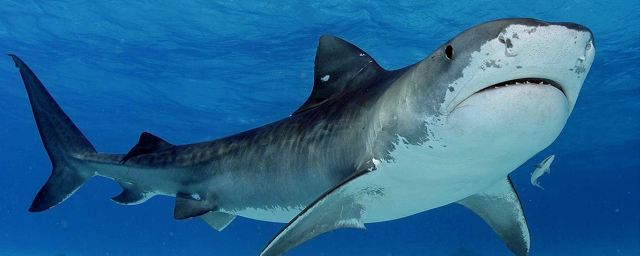Scientists put cameras and sensors on tiger sharks and learned how they hunt
Sharks are not prone to active hunting; they conserve energy even when they start chasing their prey. Also, sharks have poor eyesight, but that is what they rely on.

Researchers from the School of Natural Sciences at Mikkuori University decided to take a first-person look at shark hunting. They fished several tiger sharks out of the sea west of Australia, outfitted them with cameras and sensors, and released them back in. The findings are described in the Journal of Experimental Marine Biology and Ecology.
The scientists watched the sharks hunt their most important prey, the sea turtle. The sharks constantly swam past the reef where the turtles were sitting, but they didn't see the prey. And scientists noticed the motionless turtles when they reviewed the raw video.
Researchers note that tiger sharks have poorer vision than humans and cameras, and they can spot prey when it's on the move. Contrast also helps sharks see their prey - if a turtle stands out in the background, sharks notice it and begin tracking it in "predator mode."
Scientists note that it is their eyesight that sharks rely on when they hunt. When they see potential prey, they loop and study it, rather than chasing at top speed. In addition, sharks live in an environment where food is scarce, so they conserve energy even when hunting.
